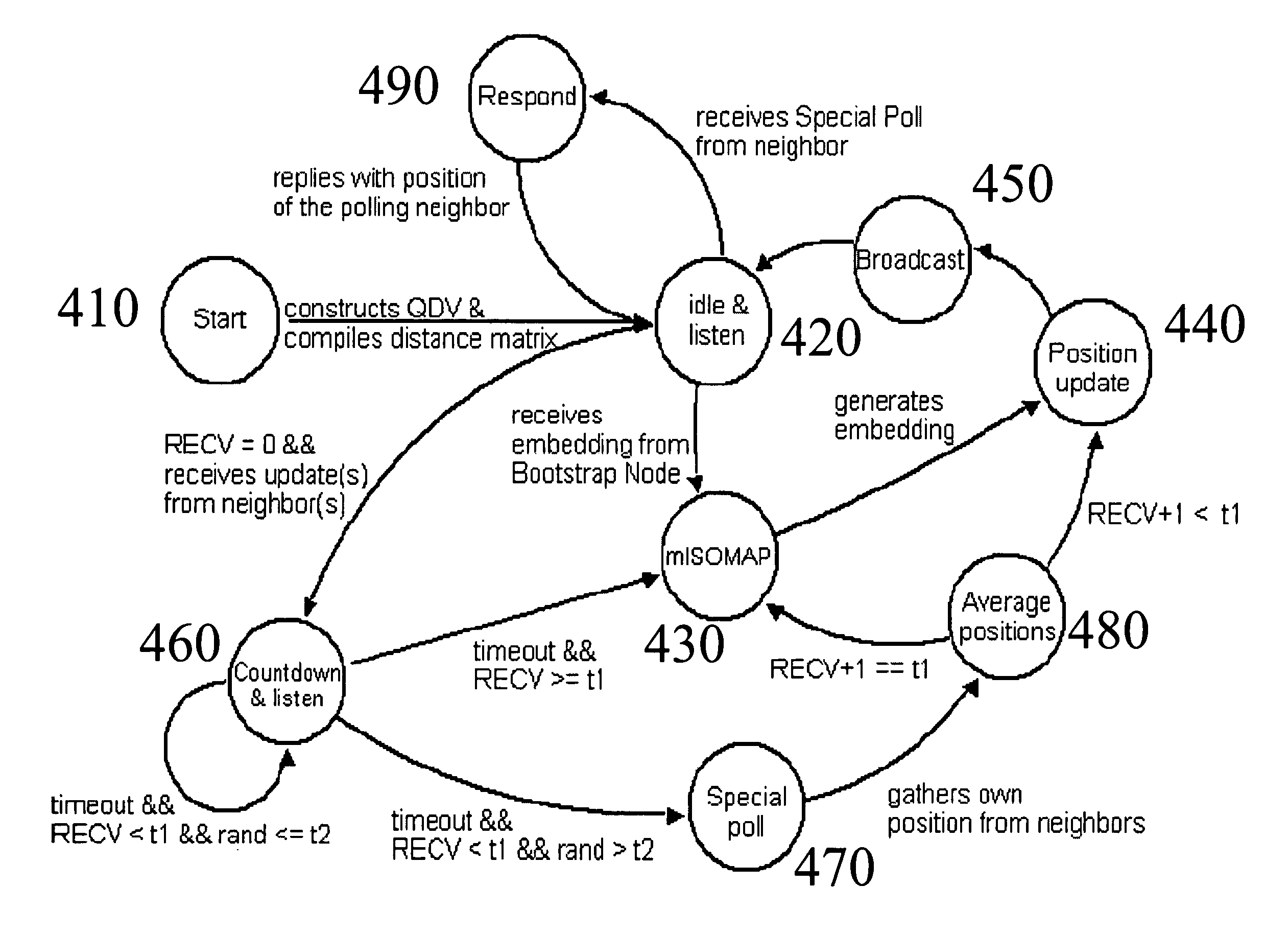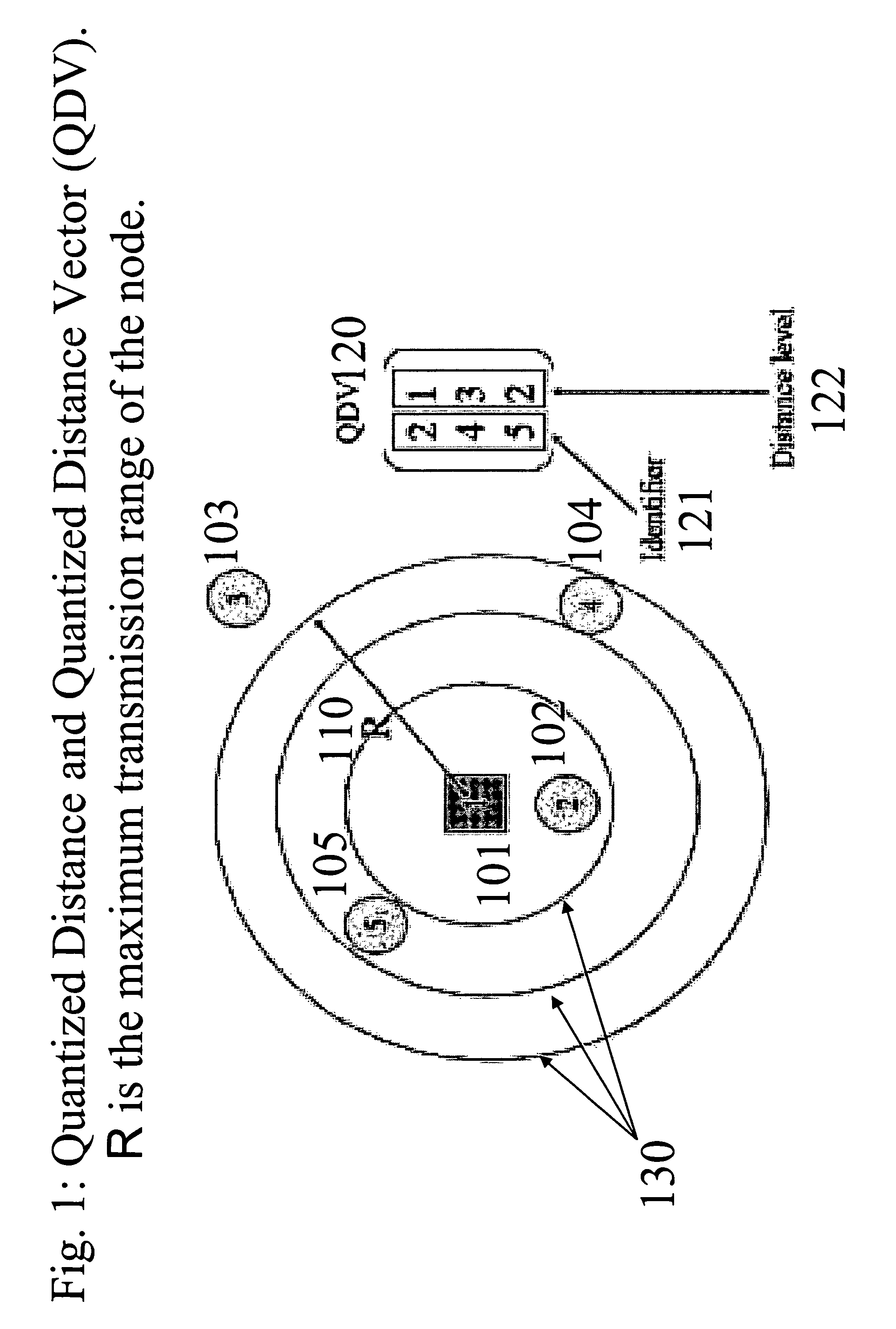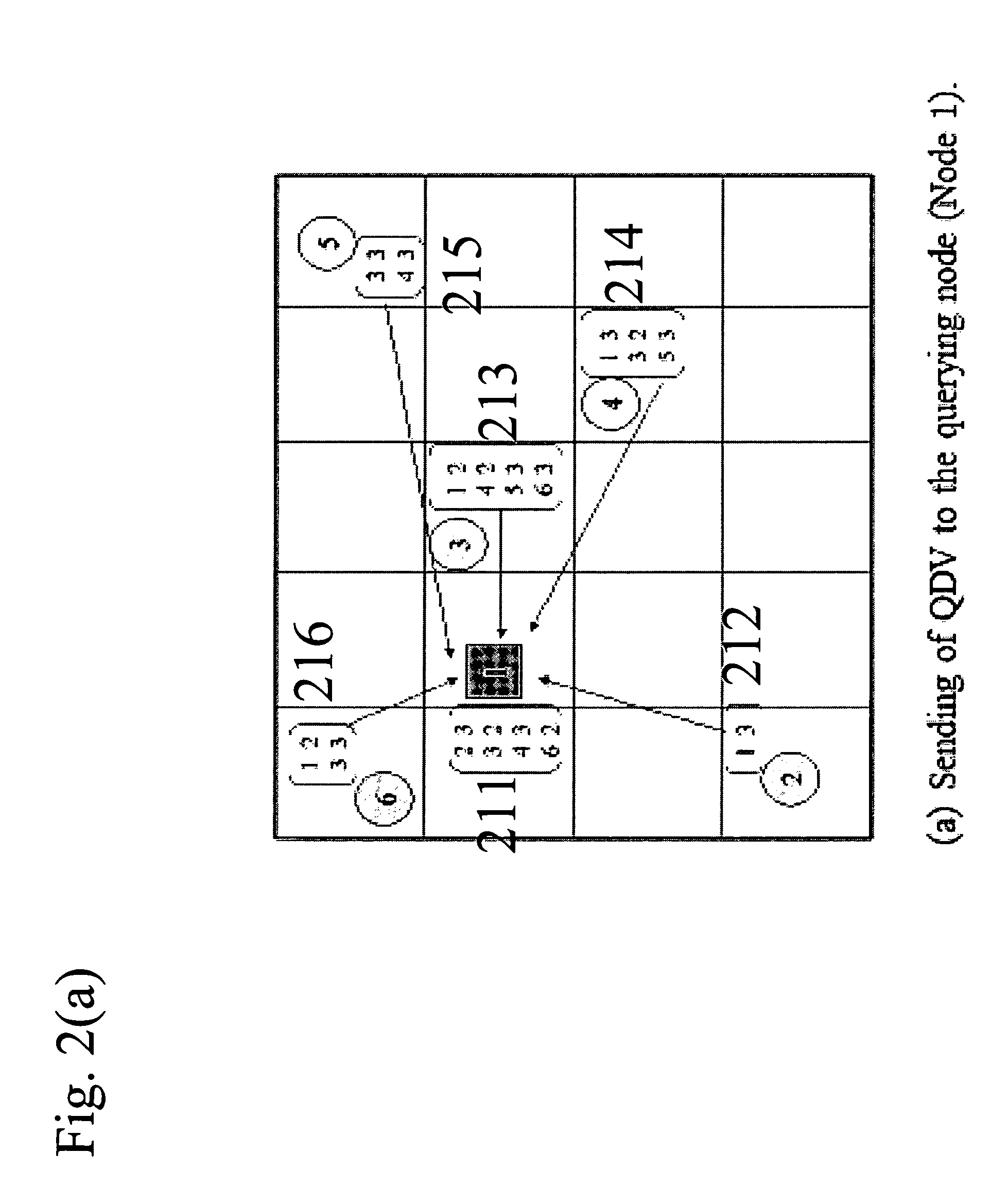Distributed position estimation for wireless sensor networks
a wireless sensor and distributed position technology, applied in the field of position based services in wireless sensor network, can solve the problems of not all schemes are applicable in a wireless sensor network setting, requires costly special receivers, and is prone to measurement errors in measuring distances, and achieves less environmental protection
- Summary
- Abstract
- Description
- Claims
- Application Information
AI Technical Summary
Benefits of technology
Problems solved by technology
Method used
Image
Examples
Embodiment Construction
[0048]The numerous innovative teachings of the present application will be described with particular reference to the presently preferred embodiment (by way of example, and not of limitation).
A. Location Estimation
[0049]In the system, every node has a unique identifier (ID) and has a maximum transmission range R. In this embodiment the node is assumed to be able to adjust its power so that it can communicate with its neighbors at discrete distances away. For ease of discussion, it is further assumed that its coverage is represented by concentric circles with a step-wise increase in radius. Again for simplicity of discussion, the nodes here are limited to homogeneous nodes, i.e., they have the same transmission range R and the same levels of quantized distances. Note that this embodiment can easily be extended to handle other non-circle coverage shapes and heterogeneous nodes.
[0050]In FIG. 1 the distance discovery process for the square node with ID 1 is shown 101. FIG. 6 shows an ex...
PUM
 Login to View More
Login to View More Abstract
Description
Claims
Application Information
 Login to View More
Login to View More - R&D
- Intellectual Property
- Life Sciences
- Materials
- Tech Scout
- Unparalleled Data Quality
- Higher Quality Content
- 60% Fewer Hallucinations
Browse by: Latest US Patents, China's latest patents, Technical Efficacy Thesaurus, Application Domain, Technology Topic, Popular Technical Reports.
© 2025 PatSnap. All rights reserved.Legal|Privacy policy|Modern Slavery Act Transparency Statement|Sitemap|About US| Contact US: help@patsnap.com



